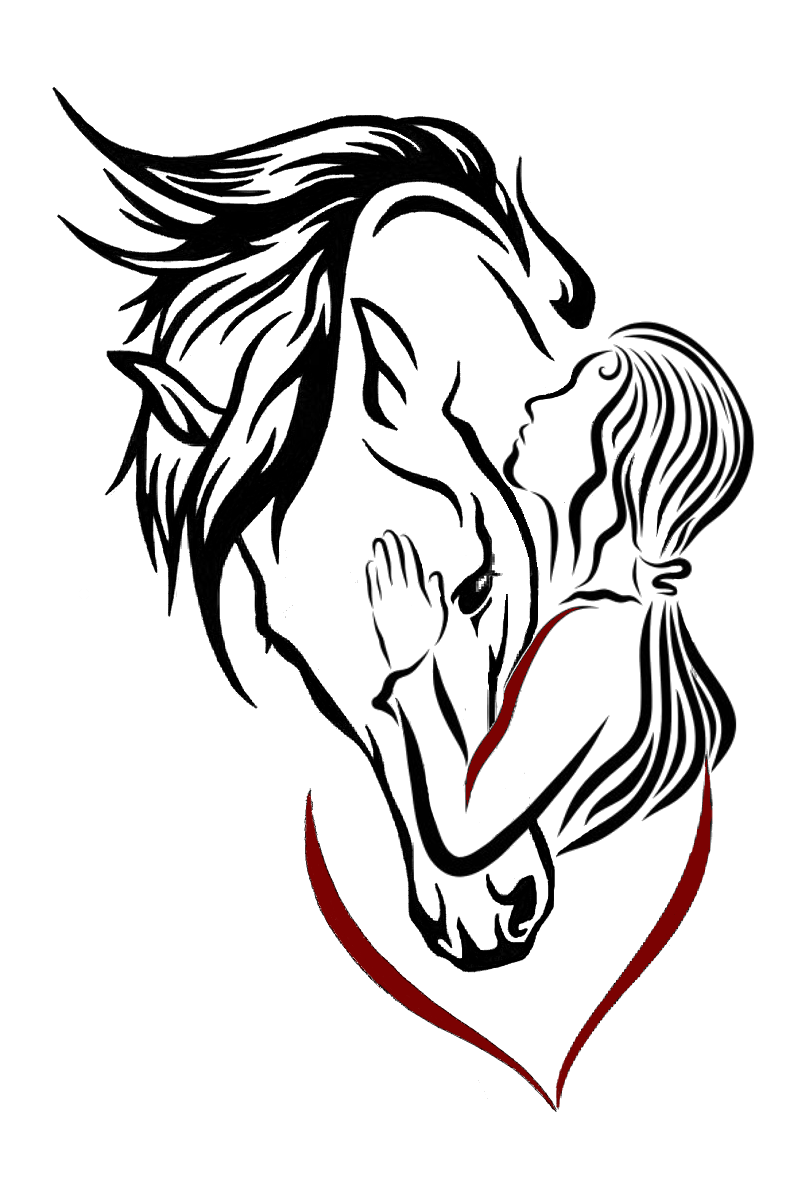Mustang Tales: Not the Tale I Wanted to Tell
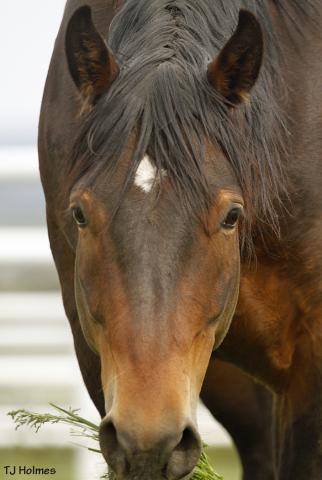
The sto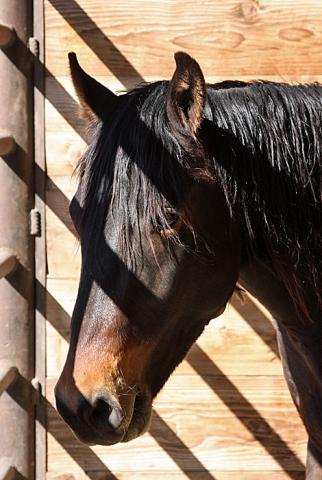 ry I wanted to tell you was about my big mustang, Makanani (beautiful eyes). In the fall of 2011, BLM rounded up 1,132 horses from Wyoming’s Divide Basin Herd Management Area, permanently removing 993, of which my big bay colt was one. Adopted from Cañon City in 2014, Maka is now five years old, over 16 hands, and around 1300 pounds. His “training” consists of gentling and groundwork, by me.
ry I wanted to tell you was about my big mustang, Makanani (beautiful eyes). In the fall of 2011, BLM rounded up 1,132 horses from Wyoming’s Divide Basin Herd Management Area, permanently removing 993, of which my big bay colt was one. Adopted from Cañon City in 2014, Maka is now five years old, over 16 hands, and around 1300 pounds. His “training” consists of gentling and groundwork, by me.
He’s five. I’m 61. He’s big, strong. I remember being strong. But strength can fade as the years gain, and despite my big mustang’s big-hearted gentleness, starting him—moving him toward saddle and rider—has been, at the least, intimidating.
Last year, TJ Holmes and I audited Buck Brannaman’s colt-starting clinic at Buck’s ranch in Wyoming. We mentioned Maka to Reata Brannaman and Isaac Johnson, who were running the clinic. In December Isaac contacted me, 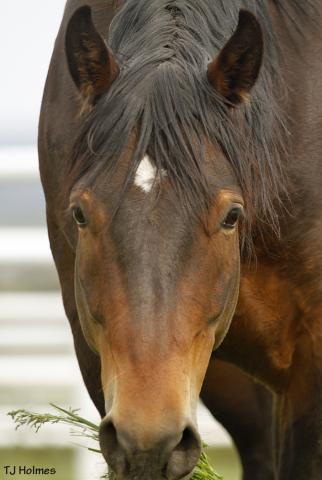 asking if I was still interested in bringing my mustang. I e-mailed TJ immediately, and we floated on a dream cloud through the months of preparation—Maka the mustang was going back to Wyoming, to be started under the expert eye of Buck Brannaman! I continued with groundwork, studying Buck’s DVDs, wishing I could remember everything as I asked my big mustang to move on a soft feel.
asking if I was still interested in bringing my mustang. I e-mailed TJ immediately, and we floated on a dream cloud through the months of preparation—Maka the mustang was going back to Wyoming, to be started under the expert eye of Buck Brannaman! I continued with groundwork, studying Buck’s DVDs, wishing I could remember everything as I asked my big mustang to move on a soft feel.
Eventually I got an e-mail from Reata outlining details. I’d already had blood drawn for Coggins, but would have to get Maka vaccinated. My vet came to the ranch. Maka tolerated the needles. I checked vaccines off the list.
The morning after the shots, in the cool air of the feeding hour, all appeared well. But that warm afternoon when I walked up to the pens to feed, something was wrong. Maka could barely walk. His eyes were glazed over with fever, his legs stiff, one hugely swollen. In tears I called the vet, and we started a protocol of IVing Maka antibiotics every four days, wrapping the inflamed knee daily, and giving anti-inflammatory meds orally as his tolerance for needles rapidly diminished.
Three weeks passed before Maka made the turn toward health. He could not possibly travel 1500 round-trip miles or endure a clinic. Another week and he was better enough that I decided I could go, leaving Maka in the care of my cowboy son and taking a different colt. Not a mustang, though—the sweet and gentle four-year-old registered Paint, Maui.
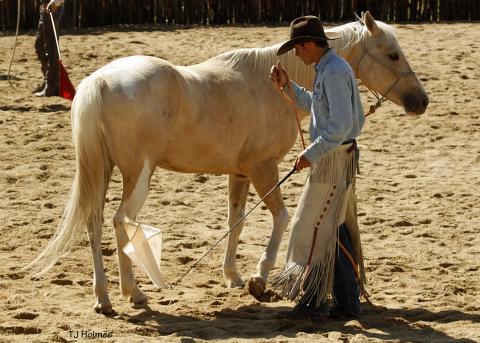 At Buck’s, TJ took many photos of Maui the Paint with his person, Townsend Prince; of Buck on his own young filly and older gelding; and of the other invited riders and their colts. Maui was perfect and it was all good (except Maka wasn’t there).
At Buck’s, TJ took many photos of Maui the Paint with his person, Townsend Prince; of Buck on his own young filly and older gelding; and of the other invited riders and their colts. Maui was perfect and it was all good (except Maka wasn’t there).
That isn’t the story I wanted to tell but it is the story I have.
The most important part of that story? In talking with horse owners and trainers, I have heard tales of other horses that have reacted negatively to vaccinations. I have heard that mustangs can be hit particularly hard. Buck Brannaman said this to TJ and me when we told him how sick my mustang got. Despite vaccinations at Cañon City while in captivity, Maka still nearly died from being inoculated again.
I have now learned that it may be best to spread the giving of vaccinations out over time. And to build up the immune system first with a regimen of strengthening herbs and feed. My vet said not to have Maka vaccinated again, ever. (Not a chance!)
I want you mustang owners and lovers to know this. To not be as naïve as I was. To research it all before ordering up vaccines. I want for your horses to never ever be as sick as my big, strong, beautiful Wyoming mustang was.
The story does have a good ending. Maka is alive and well. I couldn’t ask for more than that. But I got more—a sweet little started Paint colt.
And this: For four days I watched Buck and the handpicked 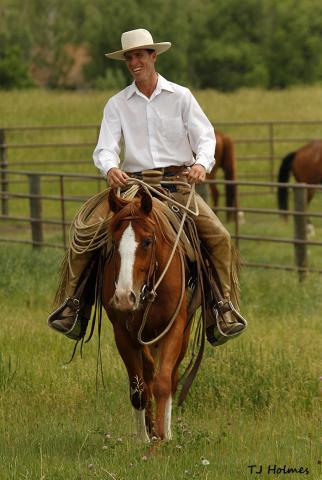
colt starters and their assigned colts. One of the trainers was Michael Sparling, originally from North Dakota, now training in Minnesota, who was working with a rescue horse, a two-year-old Quarter Horse
saved from slaughter by Kat Rohl. This little guy, Porter, was small, skinny, and terrified. He bonded to my colt, the gentle-natured Maui, immediately, following him around the corral. In the arena Porter’s default mode was to run laps around the huge round pen Buck had finished building days before we all arrived. Saddled, the little guy bucked around the pen long after the other colts had stopped (Maui crowhopped, once). I cried, watching Porter, for the life he’d endured that drove him round and round. That had caused his complete distrust of humans, and headed him toward slaughter.
By Day 4, Michael was riding Porter out of the round pen through the tall prairie grasses of the Houlihan Ranch in spring.
Still not a mustang story? Ah, but it is. Michael Sparling of Michael Sparling Horsemanship has been working with the wild horses of Theodore Roosevelt National Park for years. Horses removed from the park go through North Dakota Badlands Horse Registry, a 501(c)(3) that evolved to work in partnership with the Park Service, advocating for the horses, supporting low-stress removal (when removal is necessary), and placing horses in good homes. Michael is an intricate part of that system. He has trained dozens of mustangs, which in turn have taught him how to work with a horse like Porter.
My mustang is safe. My Paint is started. Little Porter survived the clinic a star. Everyone there will remember his fear, his fortitude and perseverance, and the ultimate trust he placed in the hands of the talented mustang trainer Michael Sparling. Maybe we didn’t have Maka at the clinic, but we had Michael.
The writer Kathryn Wilder (www.wilderhorses.live ) lives among mustangs in southwestern Colorado.
Photographer TJ Holmes has documented the mustangs of Spring Creek Basin Herd Management Area for nine years, and photographed them for years longer. You can follow TJ and the Spring Creek Basin mustangs at www.springcreekbasinmustangs.com .
